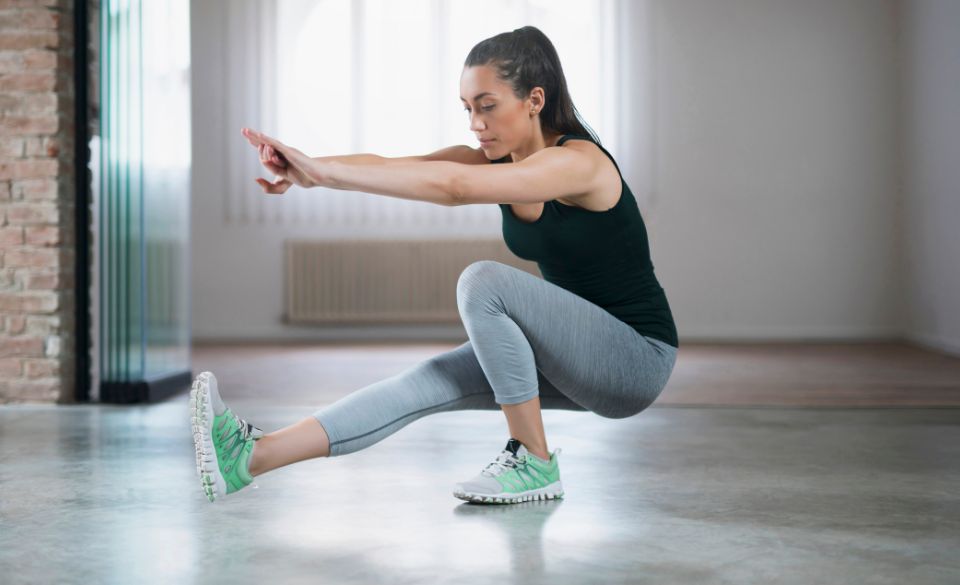
Pelvis Pain After Running: How to Prevent and Treat It
Page Contents
Running is a great form of exercise that can help you stay fit and healthy. However, it can also lead to discomfort and pain, especially if you’re not properly prepared or overdo it. One common issue that runners may face is pelvis pain after running. In this article, we’ll explore the causes of pelvis pain after running and what you can do to prevent and treat it.
What Causes Pelvis Pain After Running?
Pelvic pain after running can be caused by various factors, including anatomical and physiological issues, as well as overuse injuries. Anatomical factors, such as having a leg length discrepancy or having an abnormal pelvic tilt, can put excessive pressure on certain parts of the pelvis and lead to pain. Moreover, physiological factors like hormonal imbalances, poor posture, and weak core muscles can also contribute to pelvic pain.
One study published in the Journal of Orthopaedic and Sports Physical Therapy found that runners with a greater pelvic tilt had a higher likelihood of developing pelvic pain. The researchers also suggested that weakness in the hip muscles and poor movement patterns may contribute to pelvic tilt, further exacerbating the issue.
Another study published in the British Journal of Sports Medicine found that female runners with pelvic pain had greater hip adduction and knee internal rotation during running compared to those without pelvic pain. These movement patterns can put extra stress on the pelvic area, leading to discomfort and pain.
Overuse injuries, such as stress fractures or inflammation of the pubic symphysis, can also cause pelvic pain after running. These injuries typically occur due to repetitive strain on the pelvic region, often caused by high-intensity training or improper form.
It’s important to note that every person’s body is different, and what may cause pelvic pain in one person may not be the same for another. If you’re experiencing persistent pelvic pain after running, it’s important to consult with a medical professional to determine the underlying cause and develop an appropriate treatment plan.
How To Prevent Pelvis Pain After Running
If you’re experiencing pelvis pain after running, it’s important to take steps to prevent it from happening in the first place. Here are some tips to help prevent pelvis pain during and after running:
1. Warm-up properly: Before running, it’s important to warm-up properly. A good warm-up routine can help to improve your flexibility, increase blood flow to your muscles, and reduce your risk of injury. Try incorporating dynamic stretches and movements that activate your core and hip muscles.
2. Focus on your form: Good running form is essential to prevent pelvic pain. Make sure you’re running with good posture, engaging your core, and keeping your hips level. You may benefit from working with a coach or physical therapist to ensure that you’re using proper form.
3. Gradually increase your mileage: Overuse injuries are a common cause of pelvis pain. To avoid overuse injuries, it’s important to gradually increase your mileage and intensity of your runs. Listen to your body and give yourself adequate rest days.
4. Strengthen your core and hips: Weak core and hip muscles can contribute to pelvic pain. Incorporate strength training exercises that target your core and hip muscles, such as planks, bridges, and squats, into your training routine.
5. Wear proper footwear: Wearing proper running shoes can help to reduce impact on your pelvis and prevent injuries. Make sure your shoes fit properly and provide adequate support and cushioning.
6. Incorporate cross-training: Cross-training can help to prevent overuse injuries by providing variety to your workouts. Incorporate activities such as cycling, swimming, or yoga into your training routine.
By taking these steps to prevent pelvis pain, you can continue to enjoy running without the discomfort and pain associated with pelvic injuries.
How Do I Stop My Pelvis From Hurting After Running?
Pelvis pain after running can be frustrating and debilitating, but there are steps you can take to alleviate the discomfort. Here are some things you can do to help stop your pelvis from hurting after running:
1. Rest and Ice: Rest is critical when dealing with any type of pain, especially after a rigorous workout. Take some time to rest and allow your body to recover. Applying ice to the affected area can also help reduce inflammation and provide relief.
2. Stretching and Strengthening Exercises: Stretching before and after a run can help reduce the risk of injury and alleviate pain. In particular, stretching the hip flexors, glutes, and hamstrings can help loosen tight muscles that may be contributing to the pain. Strengthening exercises, such as squats and lunges, can also help build strength in the muscles around the pelvis.
3. Proper Running Form: Proper running form can help prevent injuries and reduce pain. When running, make sure you are landing on your midfoot or forefoot rather than your heel, which can cause excessive force to be placed on the pelvis. Additionally, maintain an upright posture and engage your core muscles to support your pelvis while running.
4. Proper Footwear: Wearing proper footwear can help reduce the risk of injuries and alleviate pain. Make sure your shoes provide adequate support and cushioning for your feet, and replace them as needed.
5. Seek Professional Help: If your pelvis pain persists, it may be time to seek professional help. A physical therapist or sports medicine doctor can evaluate your symptoms and help you develop a personalized plan to alleviate your pain and prevent future injuries.
Pelvis pain after running can be uncomfortable and frustrating, but taking the right steps can help you prevent and alleviate the pain. Rest, stretching and strengthening exercises, proper running form and footwear, and seeking professional help can all be effective in stopping your pelvis from hurting after running.
5 Best Exercises To Strengthen The Pelvis
The pelvis is an essential part of the body that provides a foundation for movement and support for the spine and hips. Strengthening the pelvis can help prevent pain and injury during activities such as running. Here are some of the best exercises to strengthen the pelvis:
1. Bridge: Lie on your back with your knees bent and feet flat on the ground. Lift your hips up towards the ceiling, squeezing your glutes and engaging your core. Hold for a few seconds and then slowly lower back down.
2. Clamshells: Lie on your side with your knees bent and feet together. Keeping your feet touching, lift your top knee as high as you can while keeping your hips still. Slowly lower back down and repeat on the other side.
3. Single-leg squats: Stand with your feet shoulder-width apart and lift one foot off the ground. Bend your standing leg and lower your body down as far as you can while keeping your balance. Push back up to standing and repeat on the other leg.
4. Side-lying leg lifts: Lie on your side with your legs straight out. Lift your top leg as high as you can while keeping your hips still. Lower back down and repeat on the other side.
5. Bird dog: Start on your hands and knees with your wrists under your shoulders and your knees under your hips. Lift one arm and the opposite leg straight out, keeping your core engaged and your hips level. Lower back down and repeat on the other side.
These exercises can help strengthen the muscles in the pelvis, including the glutes, hips, and core, which can reduce the risk of pain and injury during running and other activities. Additionally, incorporating strength training into your workout routine can help improve overall performance and prevent injury.
Final Words – Pelvis Pain After Running
Pelvis pain after running can be frustrating and debilitating, but with proper prevention and treatment, you can overcome it and get back to running pain-free. By taking care of your body, wearing proper footwear, and gradually increasing the intensity of your runs, you can reduce your risk of pelvis pain and enjoy the many benefits of running. Remember to listen to your body, take breaks when needed, and seek medical attention if necessary.


